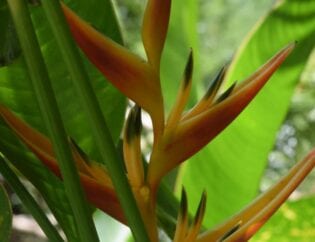
Keeping your lawn looking it’s best requires giving it the water it needs to thrive. There are several ways to water your lawn. Check out the pros and cons of each.
Hand watering
Watering by hand requires the least amount of equipment and investment- just a common garden hose. The major con of this method is that it requires someone to spend their time, standing in your yard, 2-3 times per week. This method is best suited for small patches of lawn or to help recently planted seed or plugs while they get established.
Sprinkler Systems
Most irrigation experts agree that sprinklers are the best tool for lawn irrigation. Each individual sprinkler can cover large swathes of lawn- which means less infrastructure to install compared to drip irrigation or soaker hoses. There are two main types of sprinklers: temporary and permanent.
Temporary Sprinklers
Temporary sprinklers are an attachment to a normal garden hose that can be laid on the lawn to spray water over a large area. This model can cover up to 525 square feet https://www.amazon.com/dp/B0029EGJY6/?tag=best-lawn-sprinkler-20. Pared with a hose timer you could set yourself up for automatic irrigation for around $70.
The drawbacks of a temporary sprinkler setup is that it will need to be removed before each mowing and replaced after. This type of setup works best for a single patch of lawn. If you have a front yard, back yard, and grass around the sides of your home a setup like this might be a better fit.
Permanent Sprinkler System
A permanent sprinkler system requires a larger upfront cost to map out, install underground piping, and tie them into your water main. This costs about $13,000 for a professional installation on a ¼ acre in Kona. Although this is a more expensive option, this type of system is incredibly low maintenance, completely automated, and provides the best irrigation possible for your lawn. Once the system is set up it will function automatically on a preset schedule. This system will still require a little ongoing maintenance- periodic checks to make sure the sprinkler heads don’t become clogged or leaky. The on-going effort is much smaller than any other irrigation setup.
General Tips For Lawn Irrigation
Whichever lawn irrigation system you choose, remember these tips to save money on your water bill and keep your lawn healthy and green:
• To help your lawn grow deep, healthy roots, make sure you saturate the soil each time you water. You want the water to infiltrate to a depth of 6-10 inches. Give your lawn time to dry out between watering- only water every 2-3 days. A combination of deep, less frequent watering trains your grass to grow deep roots. Deep roots make a plant that is less susceptible to drought and more resilient to disease.
• The best time to water is early morning before the heat of the day. This limits the amount of water wasted to evaporation.
• One of the keys to a healthy lawn is to mow frequently. Grass actually grows faster and thicker when it is mowed frequently. This will also help prevent unwanted weeds from taking over.
• Just like people, plants need nutrients. Regular applications of a slow release fertilizer will keep your lawn vibrant and green.









